What is Product-Led Growth and How to Adopt It in 10 Steps?
The world of SaaS is much different than one of more traditional products. And so, they require a drastically different approach to sales and marketing.
The product-led approach seems like the perfect fit for a SaaS company. In this article, we will be discussing:
- What is product-led growth;
- How is PLG different from marketing-led growth and sales-led approaches;
- What are the benefits of product-led growth;
- The most important metrics to track for a PLG strategy;
- How to adopt the PLG approach for your own software-as-a-service business.
Our Co-Founder, Farzad Rashidi is also the head of marketing for Visme, which is a product-led company.
And so, the things discussed in this article were learned from experience, which we’re more than happy to share with you.
Let’s get straight into it!
- What is Product-Led Growth?
- What is A Product-Led Growth Strategy?
- How is Product-Led Growth Different from Sales-Led Growth?
- Self Serve Onboardings
- Example: Visme
- Product-Led Growth Benefits
- Most Important Product-Led Growth Metrics to Track
- Steps to Adopt Product-Led Growth for Your Own Business
- Over To You
Link building cheat sheet
What is Product-Led Growth?
Product-led growth is a business strategy in which the primary focus is on delivering a great product, rather than on marketing or sales.
The concept behind it is that if you have a great product, it will sell itself.
This approach is often used by technology companies, as it can be difficult to market and sell a complex product.
Adopting a product-led approach usually means completely changing the way your sales team, marketing team, product team, and customer success teams work with each other.
It also means developing and providing a streamlined onboarding process that users can go through on their own, without a sales representative’s presence.
This usually means offering a freemium product that includes extensive tutorials, guides, and a whole help center worth of support materials.
Of course, your UX should be designed to be as accessible as possible to provide an exceptional product experience.
However, adopting a product-led approach does not mean completely abandoning other marketing and sales activities.
What is A Product-Led Growth Strategy?
A product-led growth strategy is a go-to-market strategy in which the primary focus is on the product itself, rather than on traditional marketing and sales activities.
The goal is to grow the business by increasing product usage and engagement, rather than by acquiring new customers.
In the end, in a product-led growth company, the product should do all of the marketing, selling, and onboarding activities all by itself.
Note: while adopting a product-led growth strategy will provide you with a self-selling product, it doesn’t mean that you can’t make use of the more traditional marketing and selling methods.
How is Product-Led Growth Different from Sales-Led Growth?
Think of your regular sales funnel. Its steps are awareness, consideration, and decision.
With a traditional sales-led approach, it is the job of your sales and marketing teams to capture leads into the funnel and guide them through it.
This usually involves educating your users through content, personalized email campaigns, demos, newsletters, exclusive offers, and countless other strategies.
When taking the product-led route, using your software is what gets your users into the funnel.
Since they completely skip the awareness and consideration stages, they are much closer to conversion right from the get-go.
As a result, you are able to save money and resources on marketing and sales-related activities and re-direct that into providing a more encompassing product.
So, how exactly do you create a tool that sells itself? The answer is actually surprisingly simple.
Self Serve Onboardings
It is no secret that people hate when you try to blatantly sell them something.
When it comes to using a product, most people would also prefer to try it out for themselves rather than have a sales representative talk their ear off about why it is such a great deal.
This especially applies to software-as-a-service products. The pandemic has facilitated the use of the product-led formula even further.
More and more businesses rely on different software to automate their workflows and improve communication.
This leads to a problem. Onboarding new employees and clients takes time and resources.
Doing one demo call and then using the recording to educate all of your employees is less than ideal since it’s not interactive at all.
The solution to that problem (and one of the main ingredients of a product-led growth strategy) is a self-serve onboarding.
A self-serve onboarding is a system where users can sign up and pay for a product or service without the need for direct interaction with a company representative.
This type of system is typically designed to be simple and easy to use, allowing users to get started quickly and without hassle.
The components of a good self-service onboarding system include:
- A way for the user to sign up on their own
- Built-in interactive tutorials
- A help center with extensive how-to articles
- The option to book a custom onboarding with your team
- A 24/7 support channel
- A way to upgrade their plan or gain access to modular features
- A way to end their subscription and delete their account
So, ideally, you want your tool to do all of the work for you, with minimal handholding, but still leave room for personalized demos with your users.
Example: Visme
Now that we have discussed how product-led growth works and the role of a self-serve onboarding in it, let’s take a look at it in action.
Our close partner, Visme, is actually a product-led company.
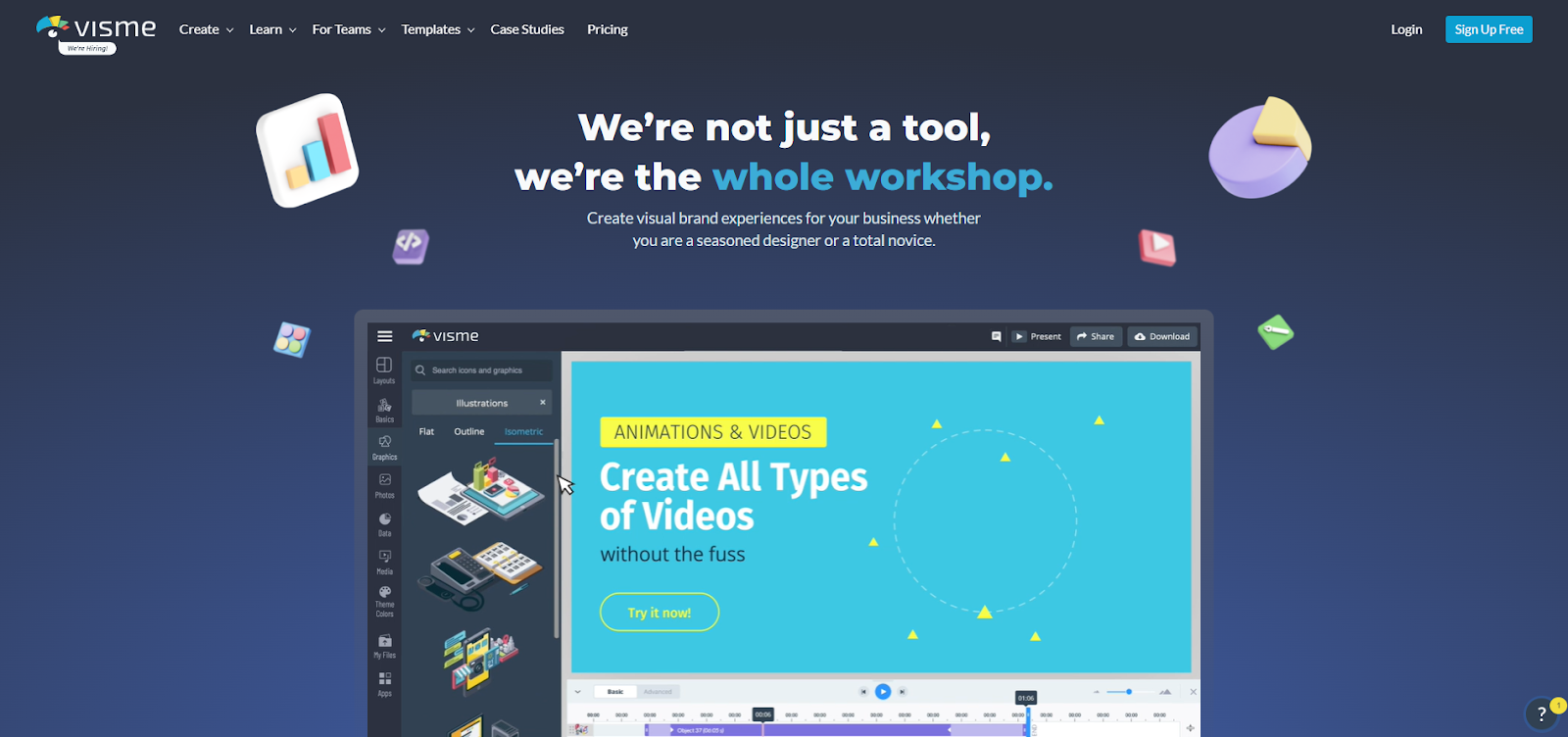
It is a software that allows you to quickly create beautiful infographics, presentations, and different design elements.
It is a great alternative to more complicated tools like Photoshop or Figma that require a certain amount of knowledge from the user to utilize properly.
Visme’s interface is completely drag-and-drop and easy to use even for people who have no previous experience in visual design.
This is the first thing that you’ll see once you log into Visme:
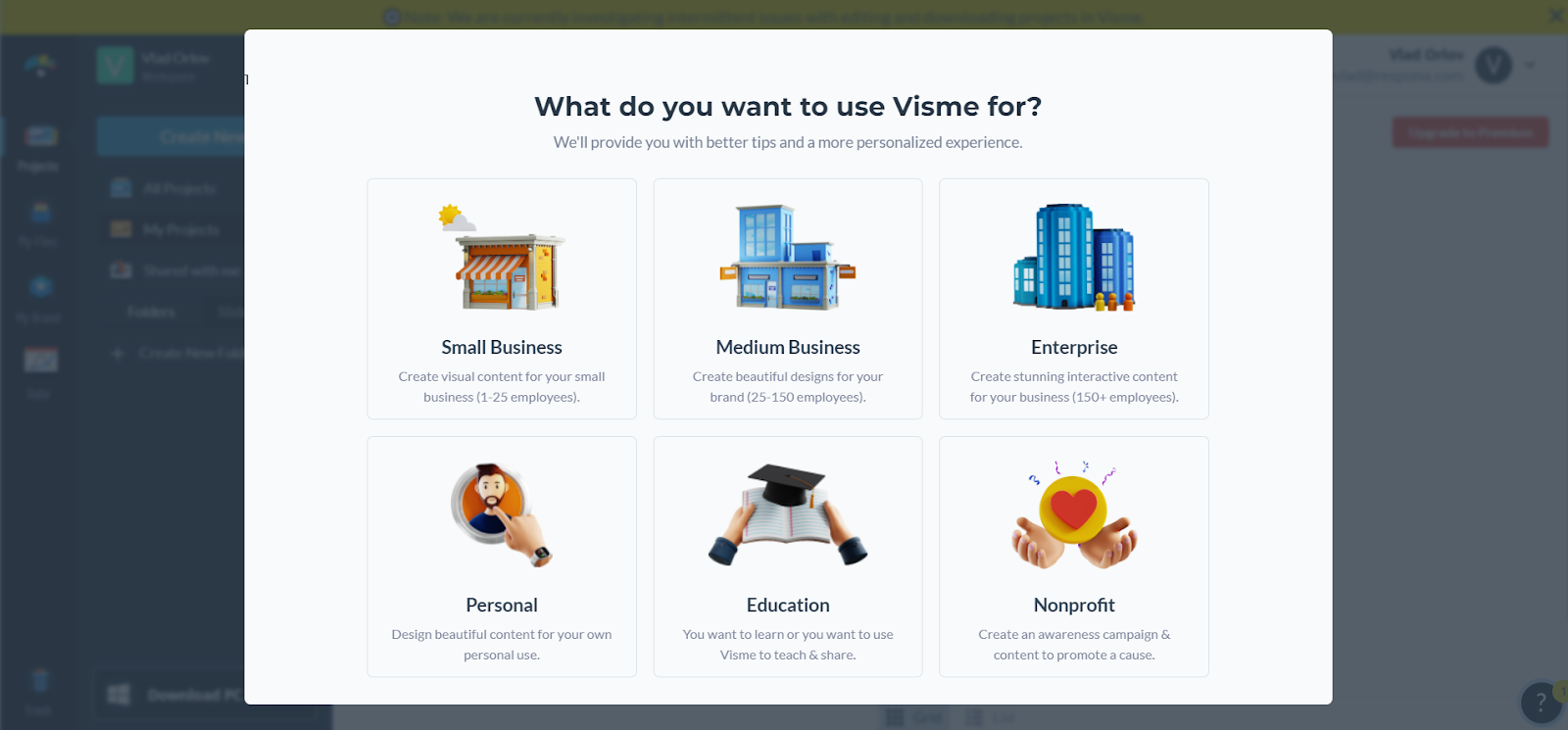
It is a series of questions about you and your business, that are meant for providing a more personalized experience later on.
Once you answer these questions, you’ll be greeted with a screen that invites you to take a look at the pre-generated templates that you can grab and quickly customize for your project.
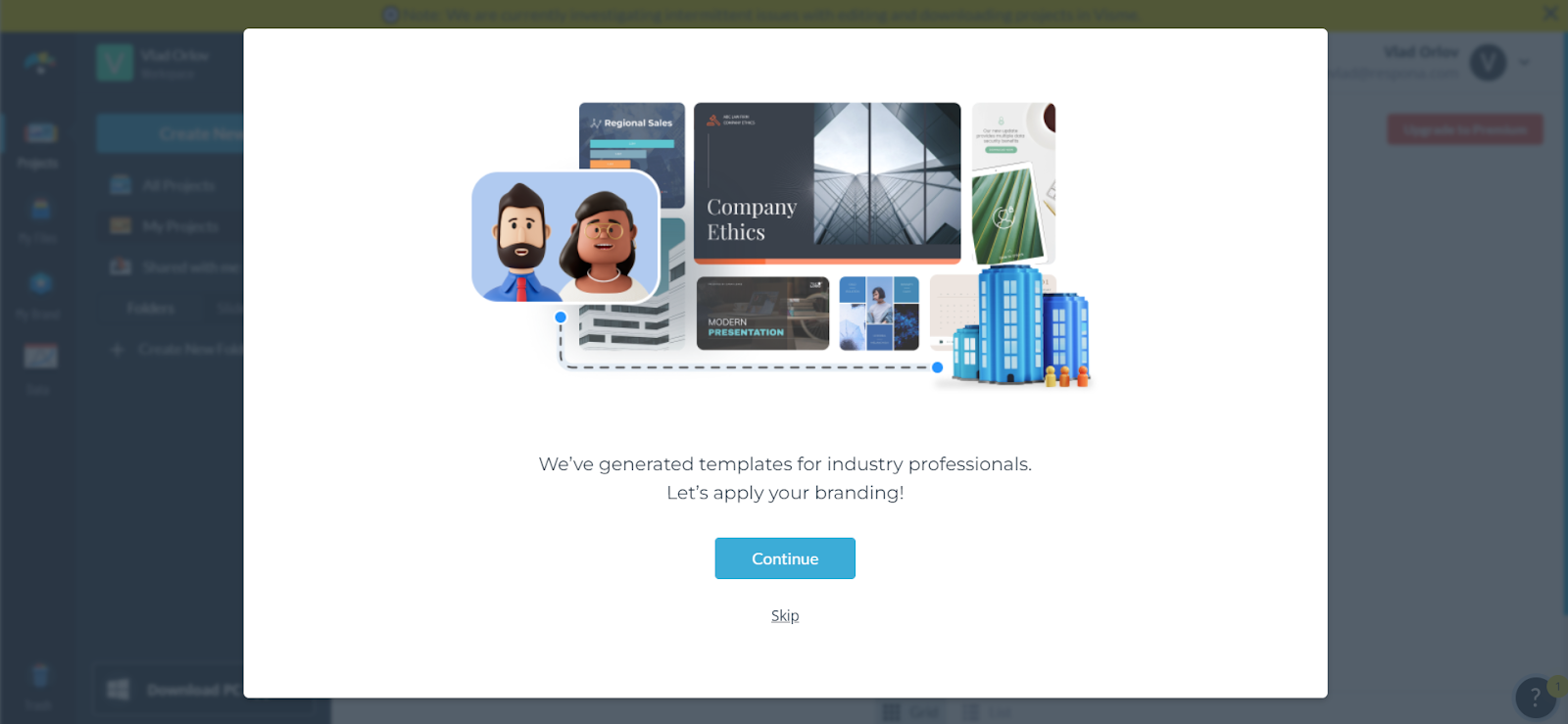
This is perfect – a lot of users quickly sign up because they need one little thing created quickly, and for free, and this prompt leads them directly to what they need.
The base UI of the tool is extremely simple: every section is easy to find and navigate right from the dashboard.
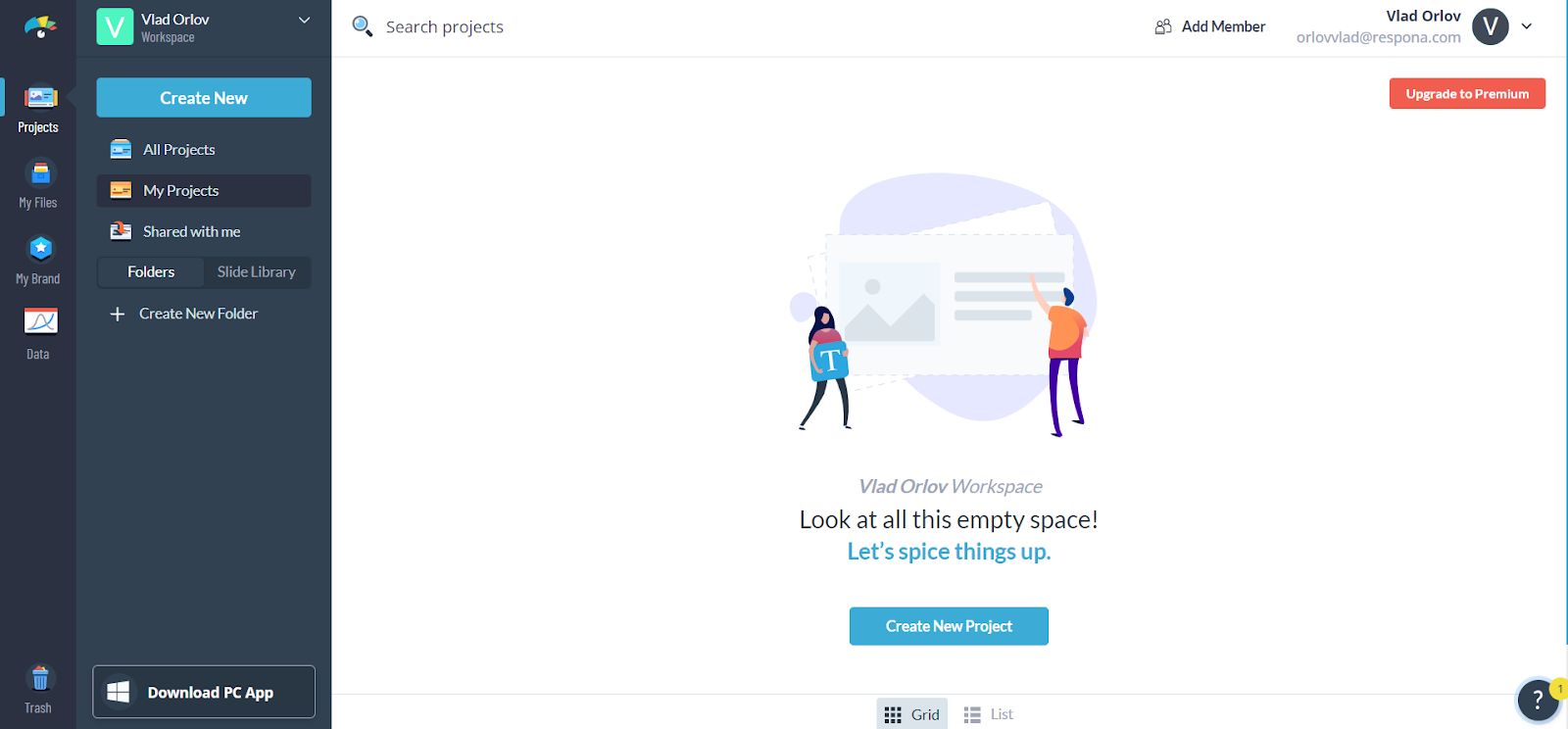
In the left sidebar, you can access all of your projects, data, and settings.
If you don’t already have a project, you will have a big blue “Create New Project” button right in the middle of your screen, with a prompt to do just that.
In the top right corner, you will also find a red “Upgrade to Premium” button.
Once you choose to create a new project, you will be taken to this screen:
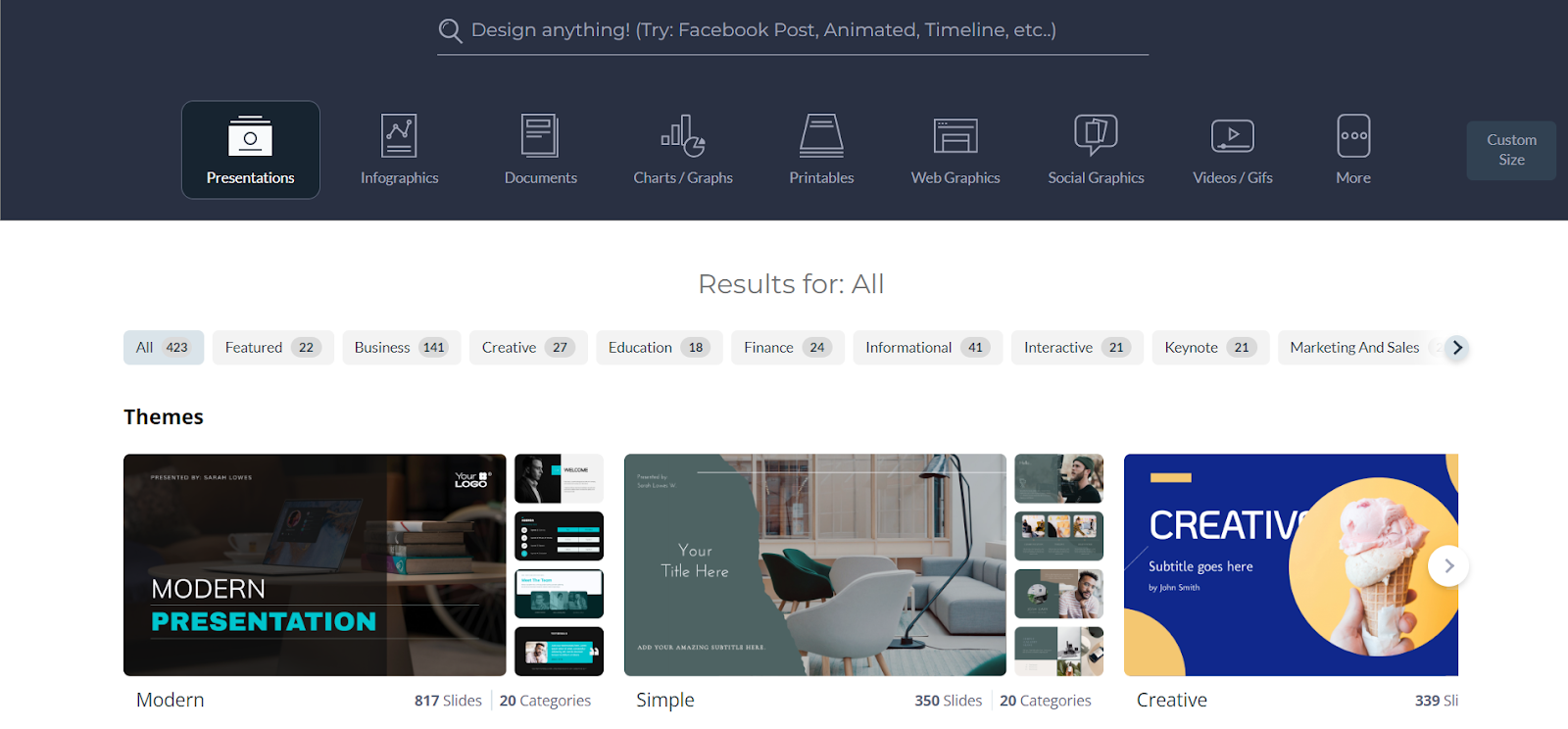
It is home to all types of themes and templates, as well as a search bar to find the desired format.
And, of course, you can choose to start with a blank slate.
You can edit and save each one with just a few clicks.
We really mean it when we say “drag & drop”.
You can simply click on elements you would like to edit or replace, or drag new ones onto your design – absolutely no coding or design knowledge required.
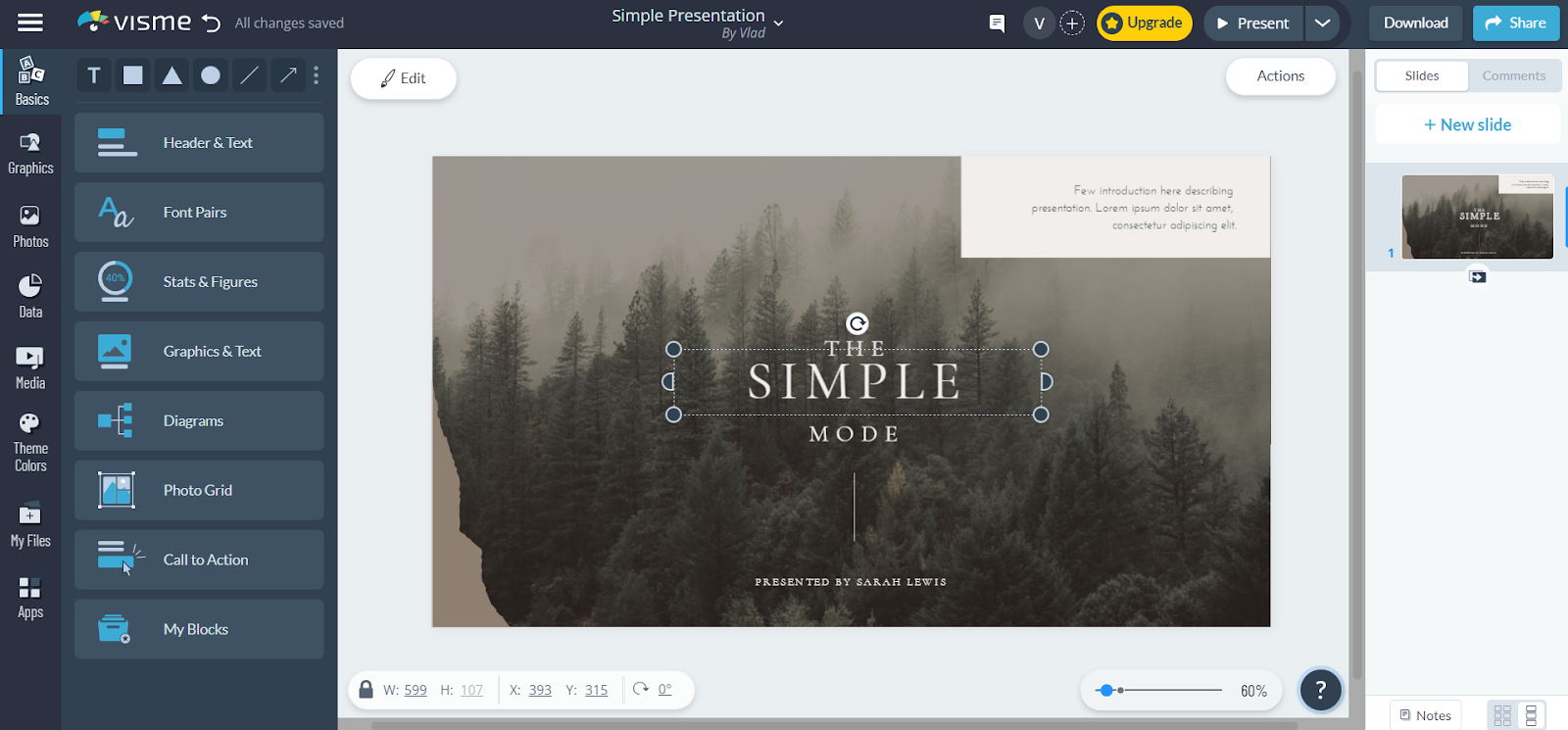
The tool is pretty difficult to get lost in just because it is so easy to use.
But if you do have any questions or issues, you can access Visme’s help center at any point by clicking on the round question mark icon in the bottom right corner.
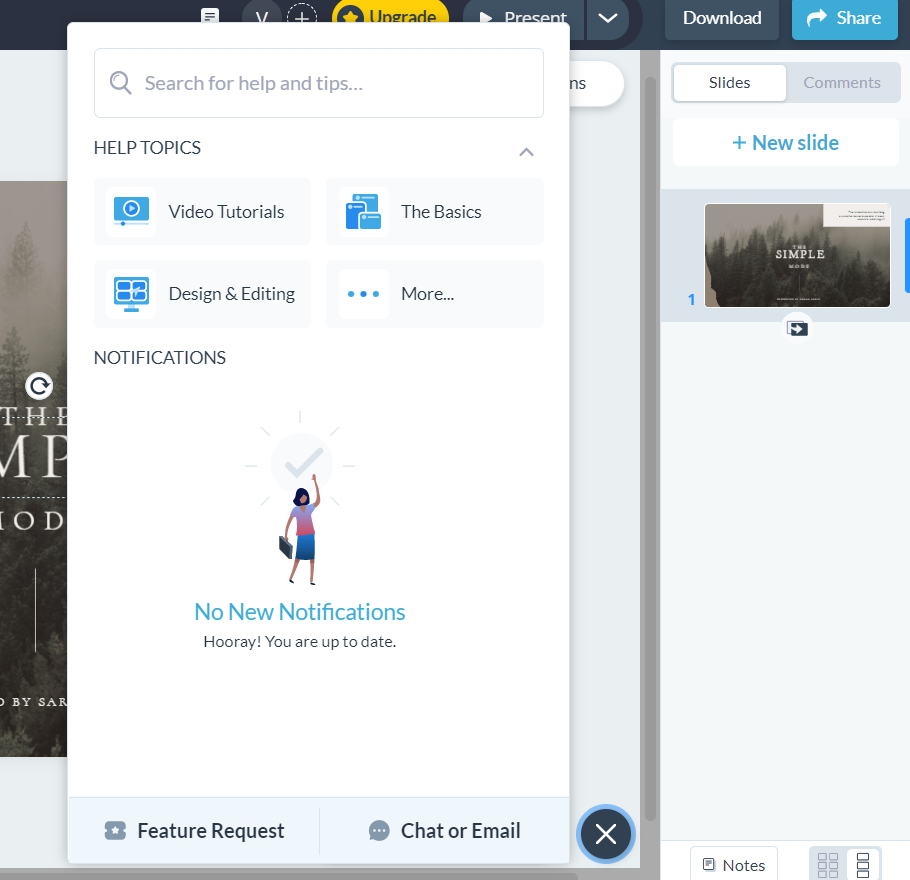
There, you will find all of the help articles, a search bar to look for very specific answers, the option to request a live chat with the support team, and the feature request options if you have any suggestions.
In just a couple of screens, Visme covers every single aspect of a self-serve onboarding, and it is one of the biggest reasons why it is so popular.
It is exceptionally valuable and easy to use for anybody, regardless of their experience in visual design.
In fact, all you need to do to get started with Visme is click “Log in with Gmail” and click on your account.
Even if you don’t already have one, it will be created within seconds.
This way, you can have your elements designed within just a few minutes.
This is an example of an extremely fast Time to Value, or TTV, which is one of the most important product-led metrics to measure.
Product-Led Growth Benefits
A product-led growth strategy has a number of benefits over a sales-led one.
- Firstly, it allows a company to focus on building a great product rather than on generating sales.
This can lead to better long-term outcomes for the company, as happy customers are more likely to continue using a product they love.
- Secondly, a product-led strategy can help a company to build a strong brand and reputation, as customers are more likely to talk about and recommend products they love.
- Finally, a product-led strategy can be more efficient and cost-effective than a sales-led one, as it requires less investment in marketing and sales initiatives.
Not all businesses will be compatible with the product-led model.
The biggest hurdle of adopting a product-led growth strategy is the fact that you will need to provide users with a freemium version of your tool, or at least let users get free trials without requiring input from your team.
When offering a freemium product, you will have to accept the fact that over 95% of the users will never make a purchase.
They will either work on that single quick project or take advantage of your tool’s free functionality for as much as they can.
This is very taxing on your company’s resources.
So, to generate a profit, you will require an exceptionally high amount of users.
Users, who were attracted to your tool by its sheer usefulness.
But, when it works out, you have a self-selling and self-marketing software, that your users are recommending to their friends and colleagues, bringing in more and more potential customers in a snowball effect.
If you’re having trouble sustaining a profitable business with this approach, it may be worthwhile to look at alternative revenue streams, such as placing advertisements on your website/software or offering complementary modules that enhance your software’s functionality.
For a tool like Visme, an example of such a module would be access to a number of premium templates.
Most Important Product-Led Growth Metrics to Track
As does any marketing/growth strategy, product-led growth has a set of its own, unique performance metrics that you need to track in order to gain insight into how well your product is doing.
Since product-led growth is only applicable to SaaS products, some of the metrics you’re going to see below are your regular SaaS performance metrics.
Awareness
Awareness is the degree to which potential customers are familiar with a brand or product.
It’s important to track for product-led companies because it’s a key indicator of future sales.
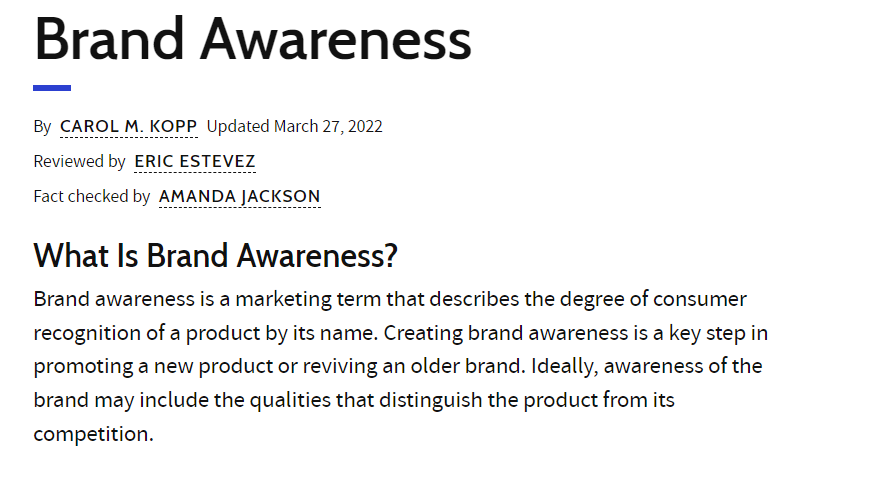
If potential customers are not aware of a product, they aren’t going to buy it – it’s that simple.
Therefore, awareness is a key metric for businesses to gauge the success of their marketing efforts and overall product visibility.
Customer Acquisition
Customer acquisition is the process of acquiring new users for a product or service.
It allows product-led SaaS businesses to measure the effectiveness of their product in attracting new customers.
Activation
Activation measures the number of users that are taking the first step with your tool. Such a first step can be creating an account, downloading your mobile app, or making their first project.
Similar to customer acquisition, this metric is important to track because it shows how good your product is at getting people to use your product.
Retention
Retention refers to the percentage of customers who continue to use a product or service over a given period of time.
It is a key metric for product-led SaaS businesses because it indicates whether customers are finding value in the product and are likely to continue using it.
Revenue
Revenue is the total amount of money that a company receives from its customers in a given period of time.
This includes the number of paying customers, as well as the exact amount they’re paying.
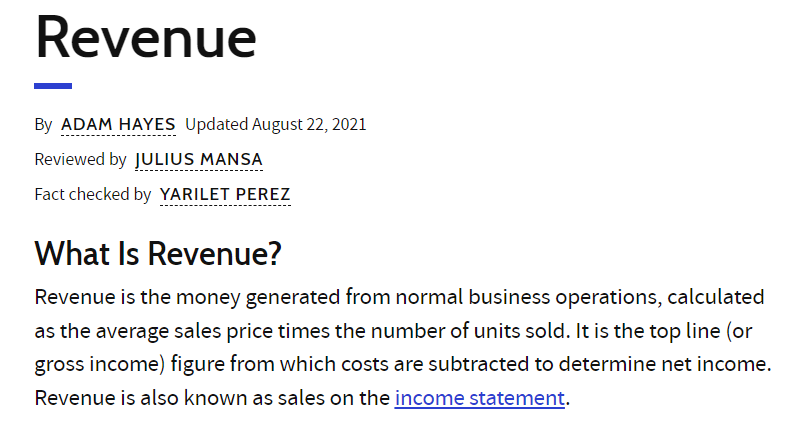
It is one of the core performance metrics for any business because it is a good indicator of its health.
If revenue is increasing, it means that the business is doing well and growing.
If revenue is decreasing, it is a sign that you need to re-evaluate the way you do business.
Referrals
A referral is when a customer or user recommends your product to someone else.
This can be through word-of-mouth, social media, or other means.
Referrals are an important metric to track for product-led SaaS businesses because they can be a strong indicator of customer satisfaction and product quality.
If customers are happy with your product, they are more likely to recommend it to others, which can also lead to new customers and increased sales.
Churn
Churn is the percentage of customers who stop using a product or service within a given period of time.
It is an important metric to track because it can indicate whether customers are finding value in the product and whether the product is meeting their needs.
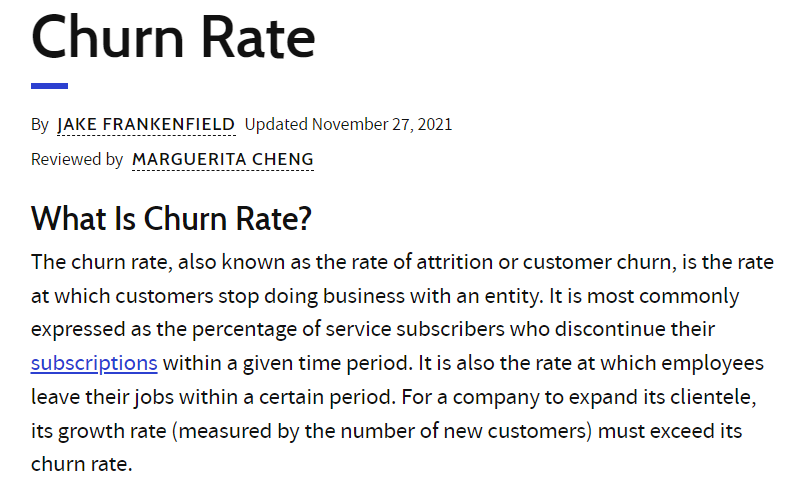
If the churn rate is high, it may be an indication that the product is not meeting customer needs and that the business needs to make changes to the product or the way it is marketed.
Stickiness
Stickiness is a measure of customer engagement and loyalty.
It is important to track because it helps to identify which customers are using the product regularly and are likely to continue using it, and which customers are at risk of churning.
Stickiness is the ratio of your daily active users to your monthly active users.
Feature Adoption Rate
The feature adoption rate is the percentage of users who adopt a new feature within a specified time period after it is released.
This metric is important to track because it allows you to measure how successful their new features are and whether or not users are actually using them.
By tracking the feature adoption rate, businesses can make changes to their products to improve user experience and increase adoption rates.
Product-Qualified Leads
Product qualified leads are potential customers who have been identified as having a high likelihood of becoming paying customers.
They are important to track because they represent a key stage in the customer journey, and can be used to measure the effectiveness of marketing and sales activities.
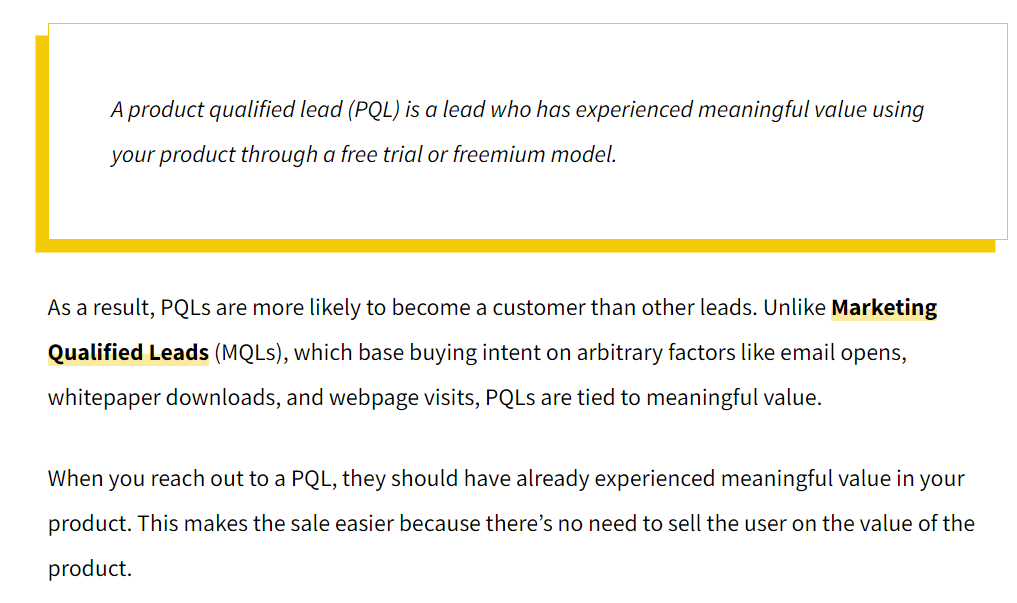
A product qualified lead is typically a user who is “activated” by interacting with your tool and reaching the “Aha!” moment – which is the moment in which they find the value that your product has in store for them.
Time to Value
Time to value (TTV) is the amount of time it takes for a customer to receive value from using your product.
It indicates how quickly customers are able to get benefits from using your product.
TTV is also a good metric for evaluating the effectiveness of your product’s onboarding process.
Ideally, your time to value should be as short as possible.
Customer Lifetime Value
Customer lifetime value (LTV) is the total amount of revenue that a customer will generate for a product-led SaaS business over the course of their relationship with the company.
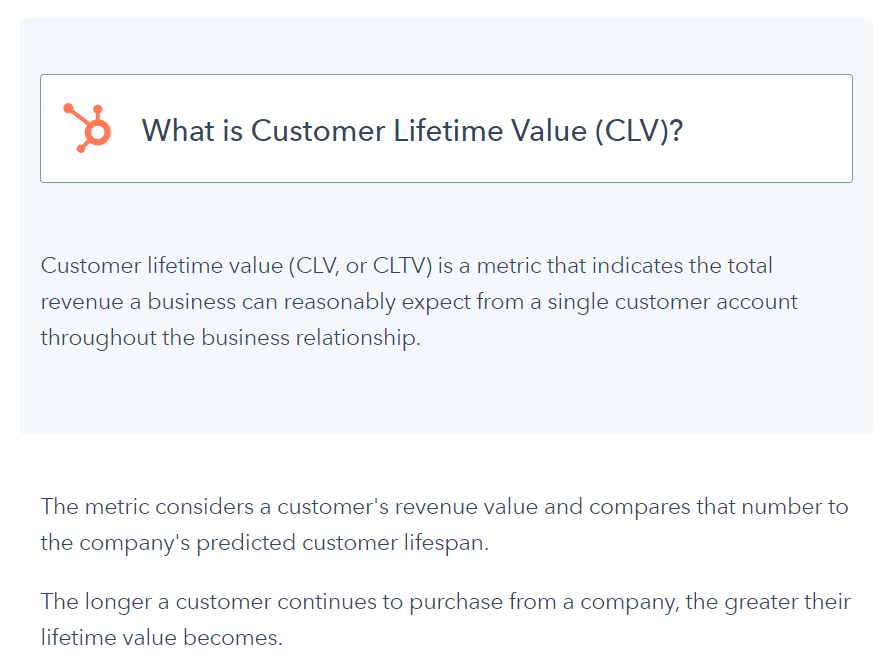
This metric is important to track because it can give insights into how much revenue a customer is likely to generate and how long they are likely to stay with the company.
This information can be used to make decisions about pricing, product development, and marketing.
Expansion Revenue
Expansion revenue is the amount of revenue that you’re able to generate from upselling and cross-selling existing customers rather than finding new ones.
Expansion revenue is very important to focus on, simply because upselling an existing user is two to three times cheaper than converting a new user.
Average Revenue Per User
Average revenue per user (ARPU) is a metric that product-led SaaS businesses track to measure and compare the revenue generated by each user of their product.
It is an important metric to track because it allows businesses to identify and invest in areas that are generating the most revenue per user, and to better understand which areas of their product are most popular with customers.
With that knowledge, you will be able to make better-informed decisions regarding your product, and develop a more profitable tool that is also more popular with your users.
ARPU can also provide you with insights as to your growth potential at the level of a single customer.
Now that we’ve discussed the most important growth metrics for PLG, lets discuss the steps required to adopt this approach in your own company.
Steps to Adopt Product-Led Growth for Your Own Business
If you’re running a software-as-a-service business with a sales or marketing-led model, switching to a product-led one instead can completely flip the way you do business, and improve it.
However, it is a huge process, so before you make that decision, it is important to fully understand exactly what that entails.
Step 1: Figure out if the PLG model will work for your business
First of all, you need to evaluate your product.
Not all SaaS businesses are able to switch to the product-led growth model simply because the nature of their product doesn’t allow it.
So, how do you actually figure out if PLG will work for you?
There is no one-size-fits-all answer to this question, as the viability of a product-led growth model for a given SaaS business depends on a number of factors.
However, in general, a product-led growth model is more likely to be successful for a SaaS business if the following conditions are met:
- The SaaS product is strong and differentiated enough to drive organic growth.
- The SaaS product is easy to use and provides a great user experience.
- The SaaS product is priced in a way that allows for sustainable growth (i.e. it is not too expensive or too cheap).
- The SaaS business has a go-to-market strategy that is focused on product marketing and word-of-mouth marketing, rather than traditional paid marketing channels.
2. Accept the change
Switching to a product-led model requires a huge amount of internal change.
Not only does it affect your marketing and sales activities, but it completely flips the interactions between your teams internally.
Changing your tried-and-tested business ways can be difficult, so before you can start getting into product-led growth, you need to accept this fact.
You have to adopt a very user-centric mindset.
You need to clearly understand your users’ needs, wants, and expectations – and provide a flawless product that addresses them, and guides them through the process.
3. Create a step-by-step plan
Taking on a project of such a scale is impossible without a detailed plan.
Switching your SaaS business to a product-led approach includes hundreds of tiny nuances with both team management and product development decisions that it’s impossible to keep it all in your head.
Special attention should be naturally paid to your product roadmap.
Develop a buyer persona, and think of all possible features that can appeal to that persona.
Then, lay them out on paper and coordinate with your development teams to make them come into reality.
4. Align your sales, marketing, product, and customer success teams
There are a few key things that you need to do in order to align your teams for a product-led growth strategy:
- Get everyone on the same page about what product-led growth actually is. This means having a shared understanding of what the term means, and what the strategy entails.
- Make sure that everyone is aware of the company’s overall growth strategy, and how the product-led growth strategy fits into that.
- Ensure that each team has a clear understanding of their own roles and responsibilities in relation to the product-led growth strategy.
- Make sure that there is clear communication between all teams.
- Finally, track and measure the progress of the product-led growth strategy, and make sure that everyone is aware of the results.
5. Design a landing page
There are a few key things to keep in mind when designing a landing page for a product-led SaaS business:
- Keep it simple. The landing page should be focused on a single call-to-action (CTA) that encourages visitors to sign up for your product.
- Use persuasive copy. The text on your landing page should be clear and concise and should highlight the key benefits of using your product.
- Use images or videos. Adding visuals to your landing page can help to explain your product and its benefits in a more engaging way.
- Make it mobile-friendly. With more and more people using mobile devices to browse the web, it’s important to make sure your landing page looks great on all screen sizes.
- Use A/B testing. Try out different versions of your landing page to see what works best with your target audience.
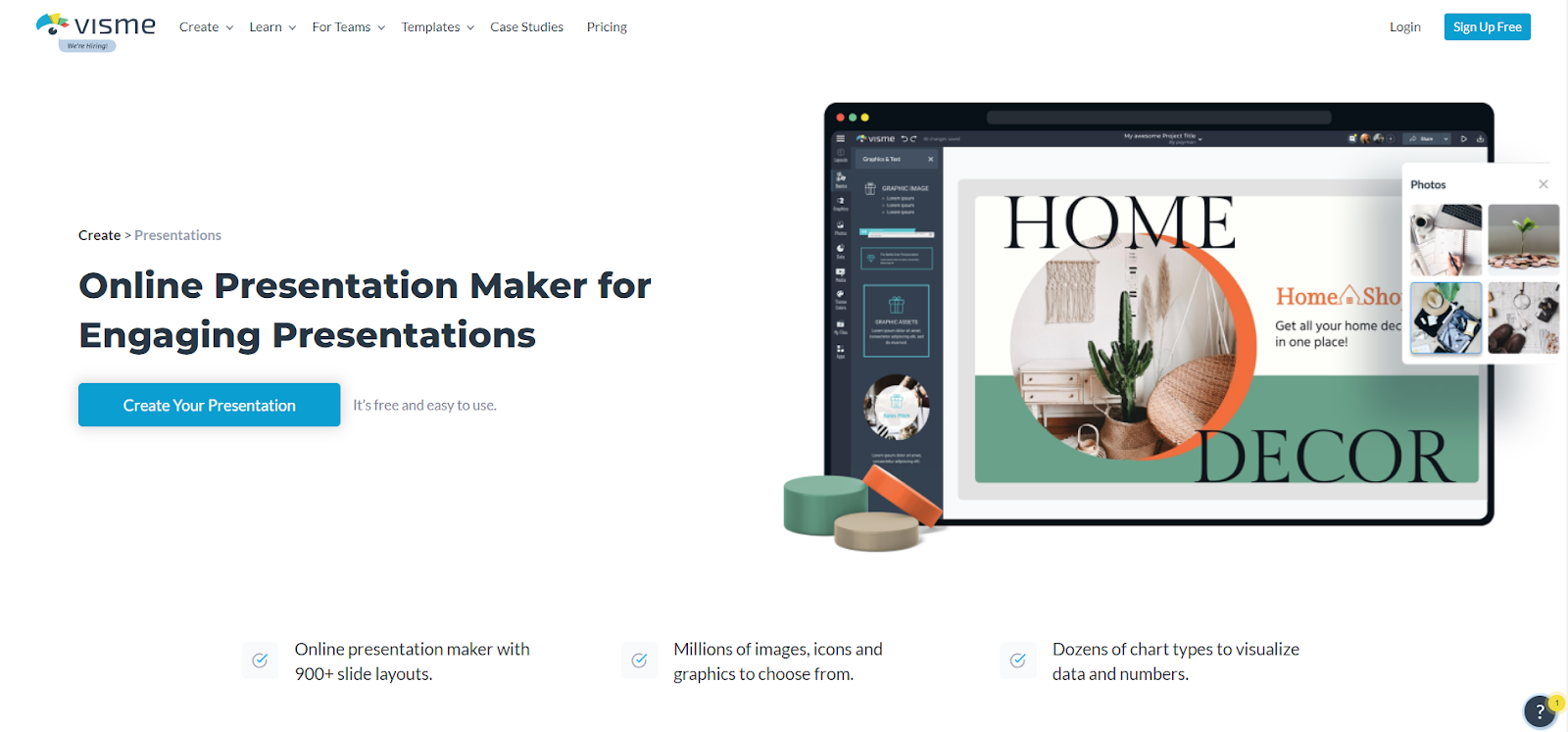
6. Create and optimize content for search intent
A blog with regular, high-quality content uploads is essential for keeping visitors coming to your website.
But what do you write about?
Think about the questions your audience is asking.
You may use tools like Ahrefs to look at the exact keywords and questions being asked.
Then, develop content that helps answer that question for the user, and publish it, tying in how your product can help them.
A blog also acts as a link magnet, and inbound links are a huge part of any website’s SEO.
A robust backlink profile can be the deciding factor between the obscurity or Google’s page 2, and ranking at the top results.
7. Provide a freemium version
The product-led approach relies on people trying out your tool for themselves, and discovering the value that it has in store for them on their own.
The best way to do that is to offer a freemium version – unlimited access to a limited set of features.
We have already covered the advantages and disadvantages of providing a freemium version of a tool, so we won’t get into them again in this section.
In case your business doesn’t allow you to run a freemium model and remain financially healthy, you may want to provide limited-time free trials instead.
8. Offer demos
Even though the idea behind the product-led business model is a tool that sells itself with no input from you, it doesn’t mean that your sales team can’t do demos anymore.
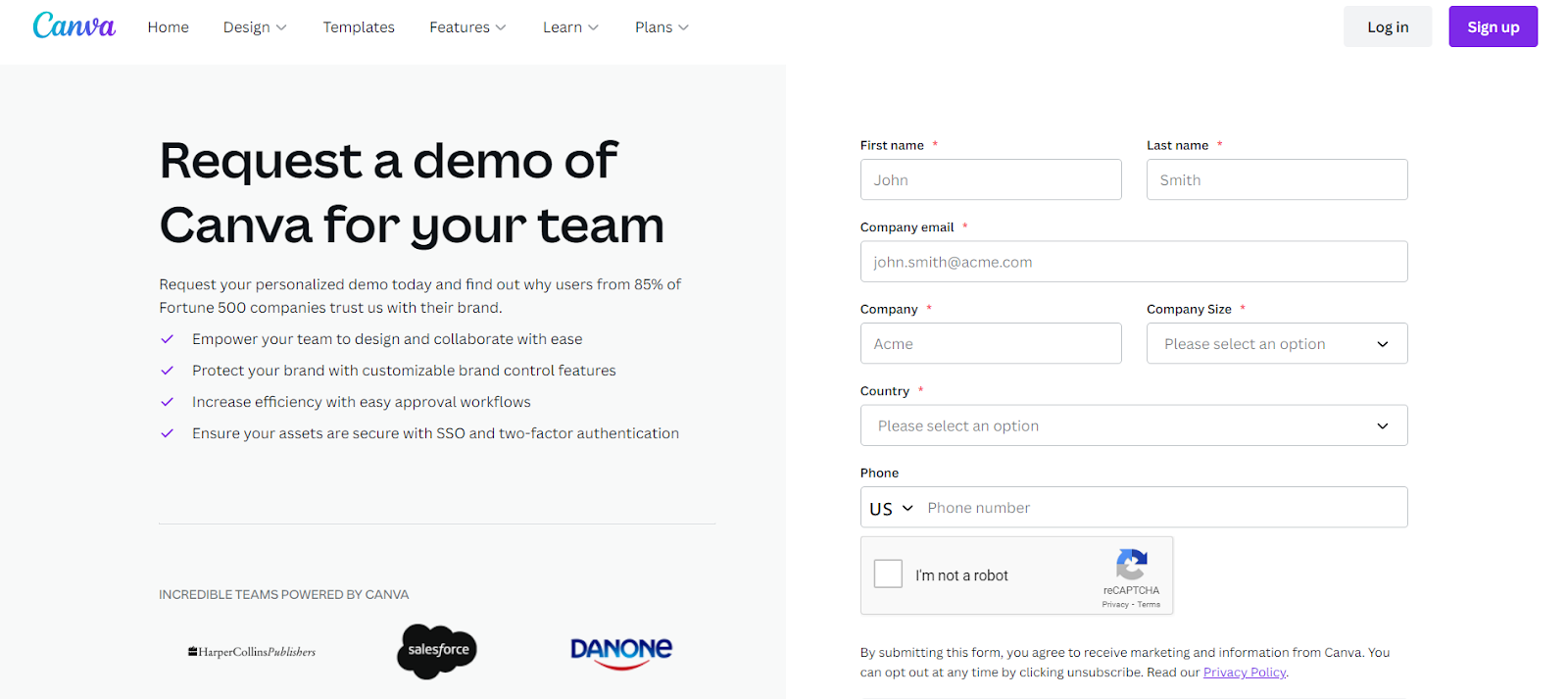
People that are interested in your highest-level plans should have the ability to book a demo with you, and if you fail to provide that for them, you risk losing out on a huge potential customer.
9. Develop an easy to follow onboarding process
We have already covered why the self-serve onboarding is one of the most important aspects of any PLG, as well as the exact aspects of such an onboarding, so we won’t repeat ourselves here.
10. Listen to feedback
Customer feedback is the most direct source of information about which parts of your tool are performing well, which ones could use improvement, and which ones can be ditched in favor of something more useful or efficient.
There are a few ways to collect feedback for your PLG company:
- Use a feedback tool.
There are many different feedback tools available online that you can use to collect feedback from your users.
Some popular options include UserVoice, Get Satisfaction, and SurveyMonkey.
- Reach out to your users directly.
Another way to collect feedback is to reach out to your users directly via email, social media, or in person.
This can be a great way to get more detailed and specific feedback about your product.
- Use analytics data.
Another source of feedback for your product-led company is your product analytics data.
This data can give you insights into how your product is being used and what areas may need improvement.
Link building cheat sheet
Over To You
If you’re running a software-as-a-service business that is compatible with the product-led growth model, there is practically no reason not to try it out.
Adopting the product-led approach can be a huge undertaking, but the end result in the form of rapid growth and automatic user acquisition is very much worth it.
Just take a look at product-led companies like Slack, Canva, and Visme!
And if you need some help with promoting your product through email, booking podcasts, or building links, book a demo with us to learn how we can help you!






